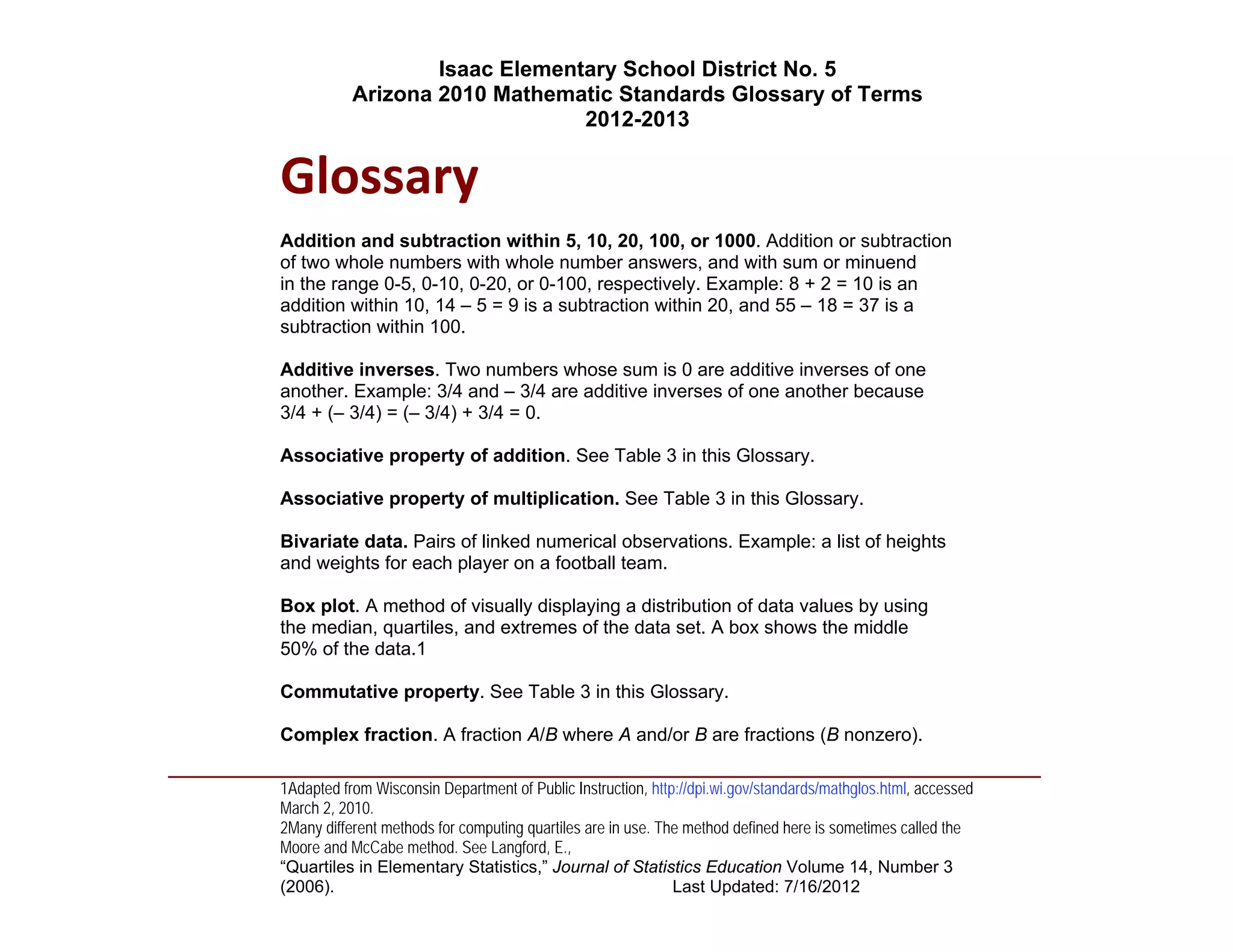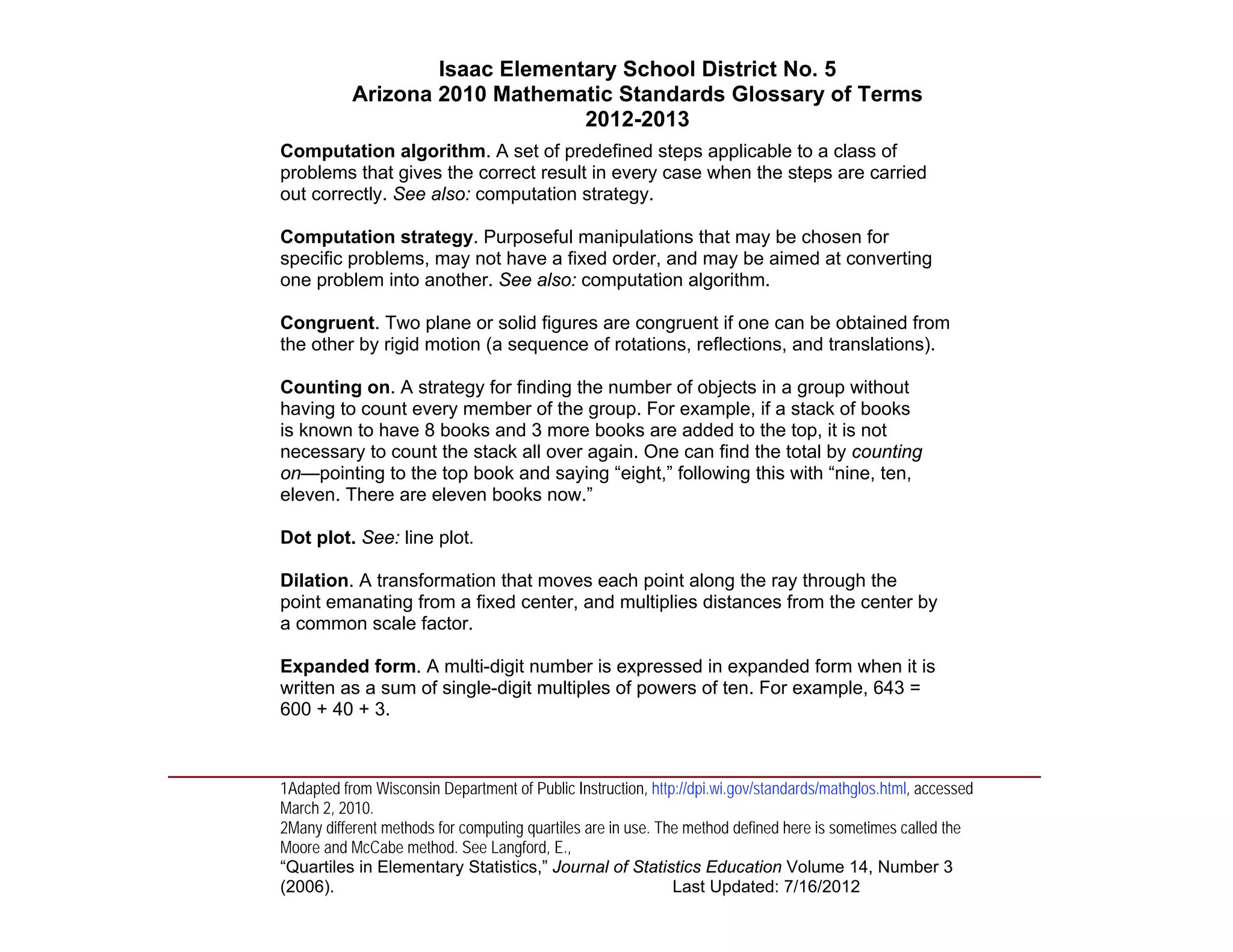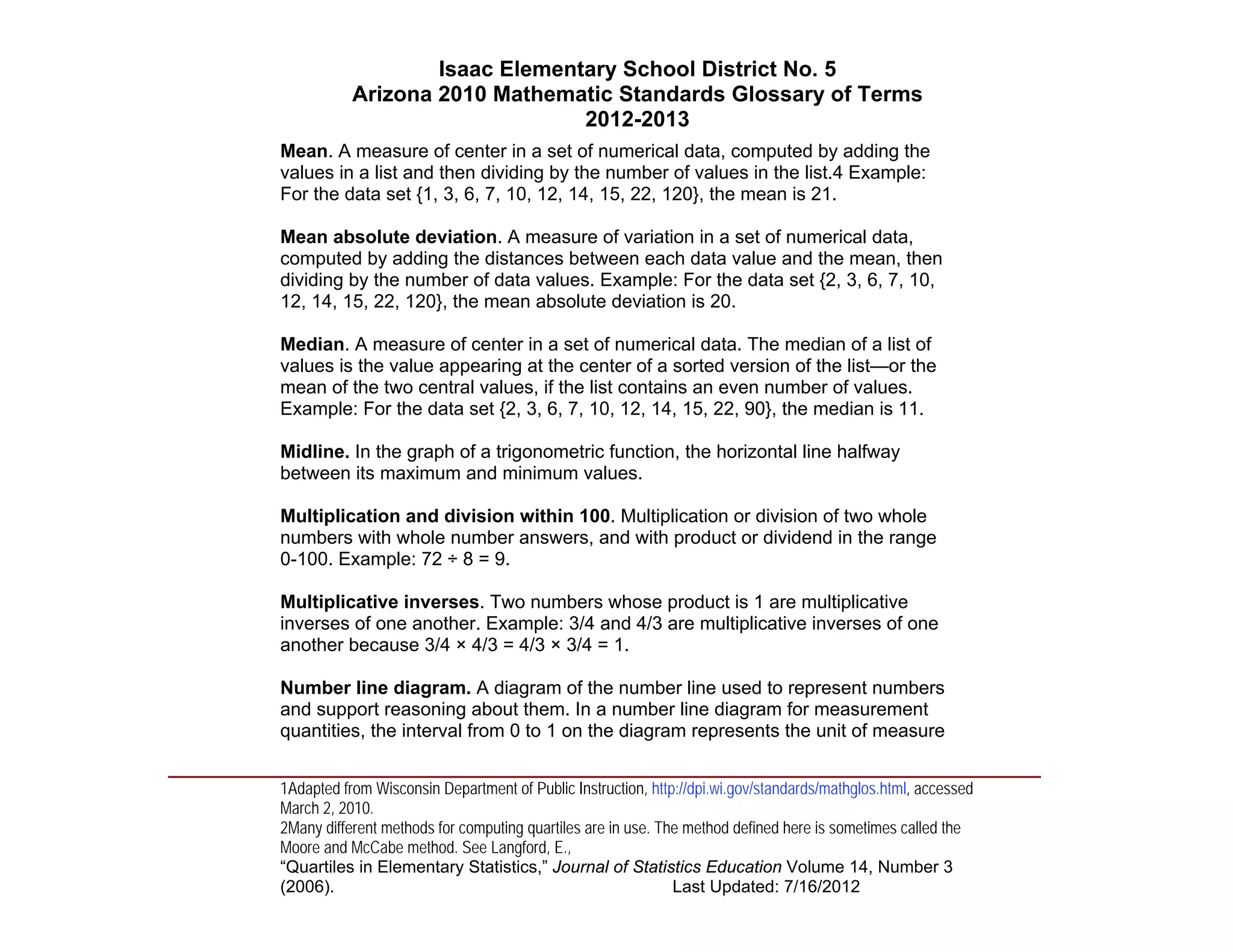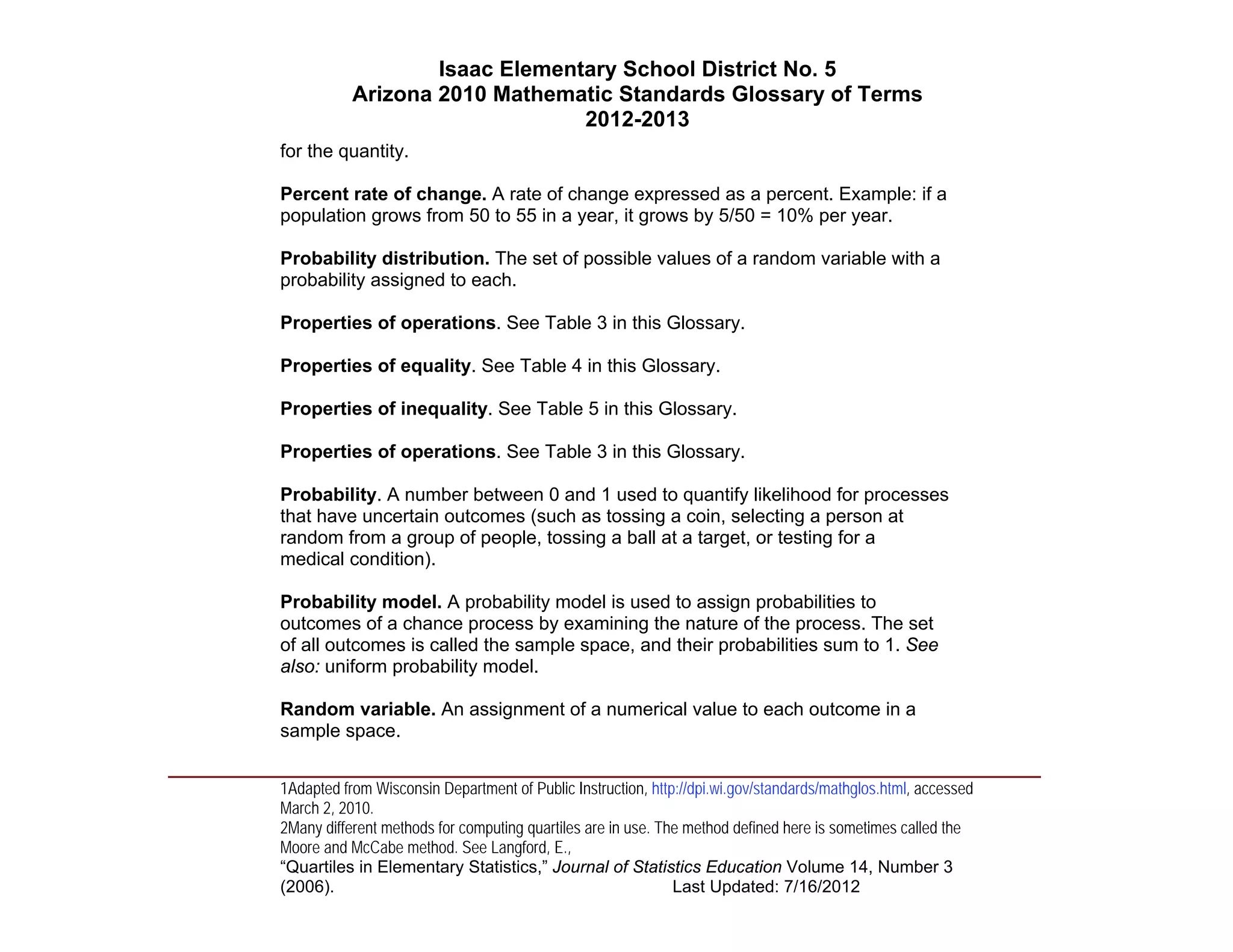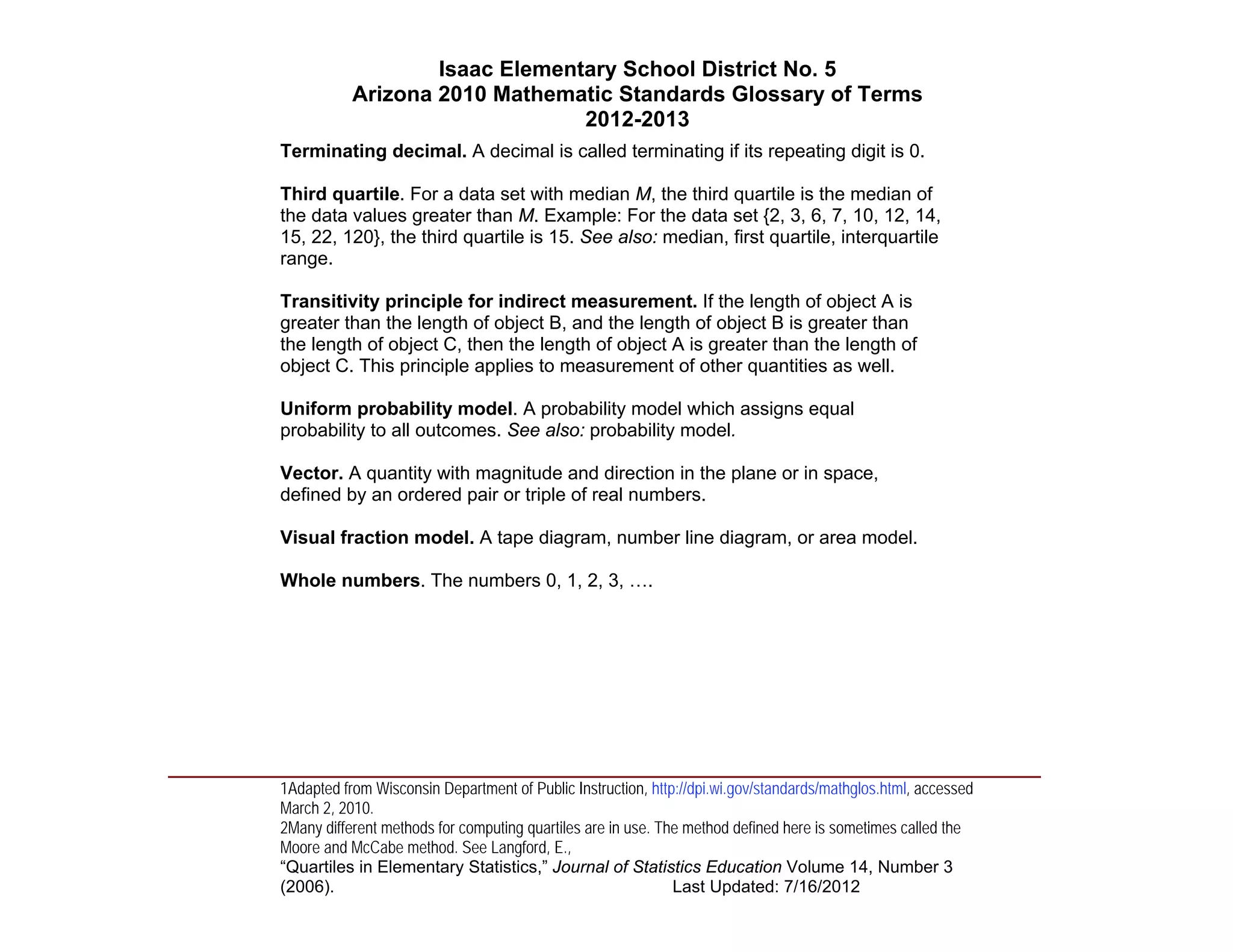This document provides a glossary of terms for the Arizona 2010 Mathematics Standards used by the Isaac Elementary School District. It defines 50 key mathematical terms across multiple topics, including number concepts, statistics, measurement, geometry, and probability. The glossary is intended to clarify terminology and concepts for teachers, students, and other stakeholders.
